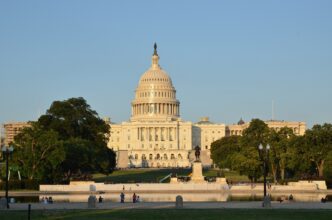Executive Summary
- Demographic Shift: Recent elections in VA, NJ, and NYC show young male voters moving toward Democratic candidates.
- Virginia & New Jersey Data: According to the AP, approximately 60% of men under 30 supported Democratic gubernatorial candidates like Abigail Spanberger.
- New York City Data: A Tufts Circle analysis indicates young men favored Zohran Mamdani over Andrew Cuomo by a nearly 40-point margin.
- Primary Driver: Analysts attribute the shift to a campaign focus on economic affordability and housing costs rather than cultural issues.
Recent election results in Virginia, New Jersey, and New York City signal a notable demographic shift, with young male voters trending toward Democratic candidates in the November 2025 elections. According to data analysis following the races, this voting bloc, which had previously shown trends toward the political right, heavily supported Democratic campaigns that emphasized economic affordability and cost-of-living issues over cultural debates.
In Virginia and New Jersey, exit polling and vote breakdowns indicate a significant realignment among men under the age of 30. According to the Associated Press, approximately six in 10 voters in this demographic supported Abigail Spanberger in her successful bid for Governor of Virginia. Similar trends were observed in New Jersey regarding support for Governor-elect Mikie Sherrill. Analysts suggest these results correlate with campaign messaging focused intensely on housing costs, job stability, and general affordability for working-class residents.
In New York City, the data reflects an even sharper divide. A broad analysis conducted by Tufts Circle reported that young male voters favored Zohran Mamdani over Andrew Cuomo by a margin of nearly 40 points. The report attributes this disparity to platform differences, specifically highlighting Mamdani’s focus on economic pressures facing younger generations compared to traditional political maneuvering.
The elections took place against a backdrop of significant national economic friction, including the longest government shutdown in U.S. history and rising consumer prices. Observers noted that the Republican strategy, which often linked Democrats to cultural conflicts, struggled to gain traction against the Democratic focus on tangible economic grievances. Furthermore, the economic climate has been impacted by tariff policies advocated by Donald Trump, which critics argue have contributed to rising costs.
Electoral Strategic Analysis
The outcomes of these elections suggest a potential pivot in the efficacy of political messaging targeting young men, a demographic previously considered increasingly conservative. The success of candidates focusing on ‘affordability’ indicates that economic pragmatism may currently outweigh cultural ideology for voters facing high housing costs and an unstable labor market. For political strategists, this data implies that addressing the ‘identity crisis’ of young male voters through direct economic policy—rather than ideological confrontation—may be the determining factor in future coalition building. These results will likely influence platform adjustments for both major parties leading into the midterm cycles.






